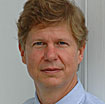During a recent interview for a seminary deanship, I casually remarked that, as an Episcopal priest, I was always careful never to allow the sermon to overshadow the Eucharist.
One of my interlocutors, a tall-steeple Baptist, shot back good-naturedly: “We Baptists are careful not to allow the sermon to get in the way of the offering.”
I grew up as an evangelical in the Midwest, where church-going (several times a week) was part of my DNA. Invariably, the sermon was the centerpiece of the service, when the preacher would hold forth in his (invariably a male, in my childhood) stentorian voice, seeking to wheedle, cajole, impress and dazzle his congregation for at least twenty minutes, often much longer. I heard many good preachers during my childhood, including an array of itinerant evangelists and my late father, who was, in my opinion, one of the best.
Since electing long ago to study American religious history, I have become fascinated with the place of the sermon in Protestant worship. The Puritans, of course, seemingly had endless patience for sermonizing. Puritan ministers would often preach for two or three hours on Sunday morning, and then the congregation would gather again in the afternoon for another several hours and again on Thursday mornings for a weekly “lecture.”
George Whitefield and other itinerants of the eighteenth century drew great crowds and perfected the art of extemporaneous preaching, although, as Benjamin Franklin noted, the itinerant preacher had the advantage of being able to use the same sermons over and over, whereas the “settled” preacher had to come up with new material every week. Protestant preaching in the nineteenth century also attracted crowds, be it on the street corners (the Salvation Army, for example) or on Sunday evenings when churches provided one of the few places (other than taverns) that provided light, in the form of gas lamps.
Here we should factor in religious gatherings were the primary — sometimes the only — form of entertainment in many places, at least until the turn of the twentieth century.
Church architecture is also another way to judge the importance of preaching. I routinely say to my students you can tell a lot about a congregation simply by looking at the building. If you walk into a church and see that the pulpit is center-stage, it is a pretty sure bet that this congregation regards the sermon as the cornerstone of their worship. If, on the other hand, the pulpit is off to the side and the altar is front and center, you are likely in a place where the community orients itself around the sacraments and preaching is secondary.
I remember the first time I entered Trinity Episcopal Church in Princeton, New Jersey, while I was a graduate student. The entire space, with its stained-glass windows and its central altar, so unlike the evangelical churches of my childhood, suggested that something important happened there. That something, I came to learn, was Holy Communion, when Jesus literally became present to the congregation in the course of the Eucharist.
Which brings me back to my opening remark about the place of the sermon in worship. For me as a sacramentalist, the sermon must never overshadow the Eucharist, which is the “main event” of worship. Accordingly, my sermons rarely exceed ten or eleven minutes. (This is something I first learned from my friend, Pastor Paul Youngdahl at Mount Olivet Lutheran Church in Minneapolis, although the imperative there is time and space; the church conducts four services every Sunday — on the hour.)
My sermons are not only short, they are simple. I try to communicate one simple idea in the course of my preaching each Sunday. In this age of information and sensory overload — cable television, the internet, Facebook — the proverbial three points and a poem is, for better or worse, as hopelessly old fashioned as the three-hour Puritan sermon.
All of this is not to say that I take preaching lightly. Not at all. The proclamation of the word is a frightful responsibility, one that I take seriously. And I hope that, at least on my better Sundays, my parishioners hear a thoughtful, carefully crafted, perhaps even eloquent sermon, one that touches both their minds and their hearts.
But for me, the sermon is not the main event of worship. The preacher’s task is not to dazzle. I’ll leave that to Jesus.

